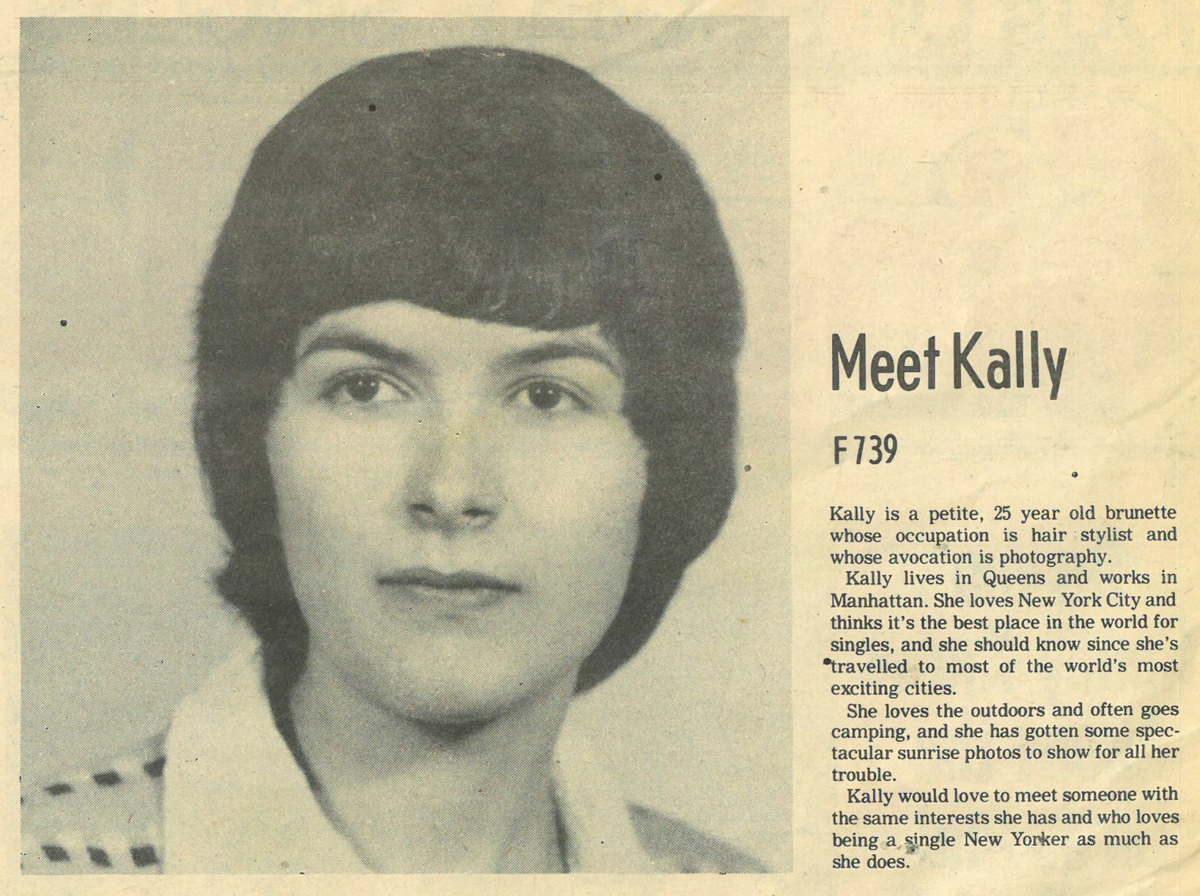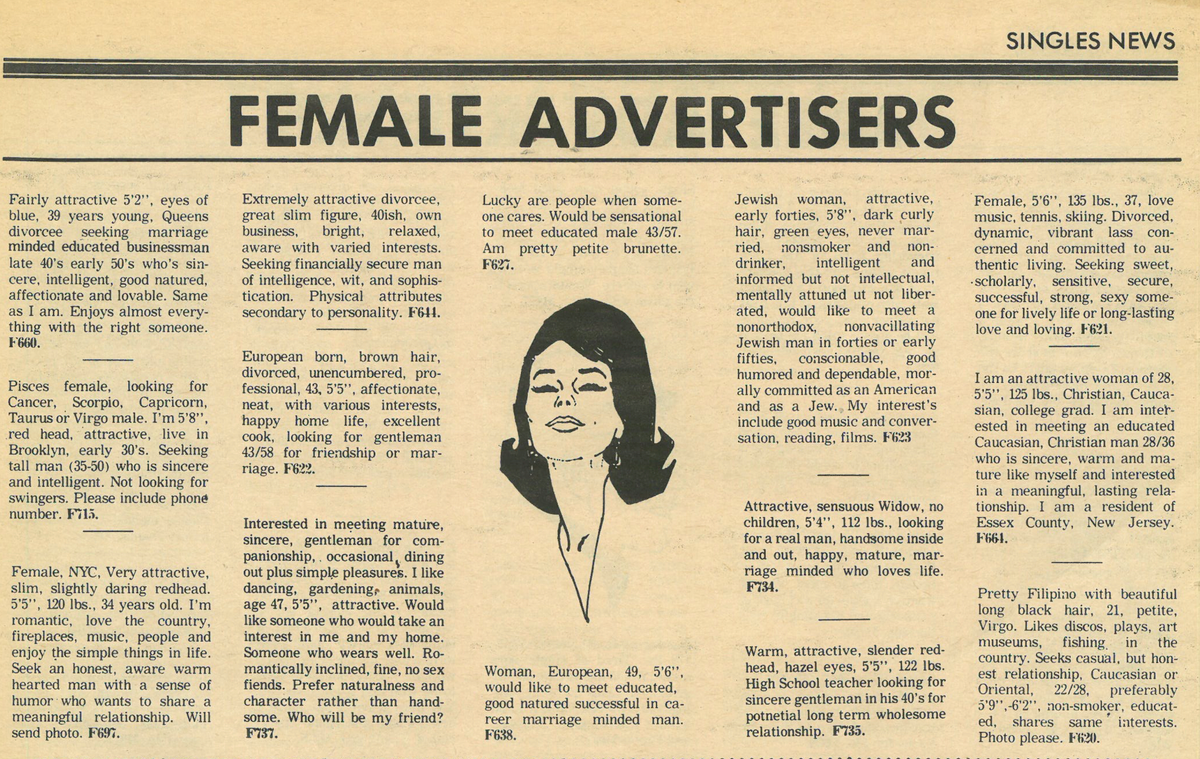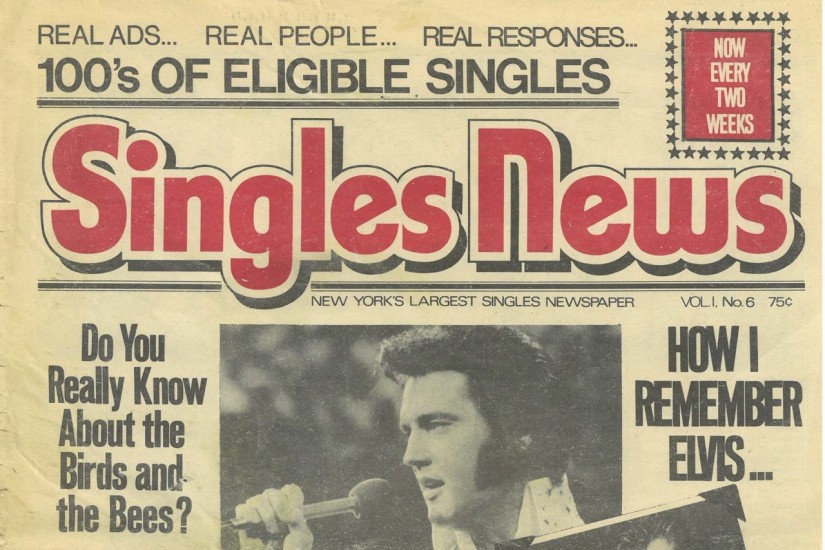In the first half of the 20th century, you might marry your childhood sweetheart, the child of your father’s business partner, or a nice boy or girl you met at church or synagogue. Now, more than a fifth of couples meets online. In the meantime, after the pill “liberated” women in 1960, dating had evolved. By the 1970s, couples were meeting at singles bars or discos—or by putting personal ads in physical, printed papers. (That spirit of optimism and belief in serendipity similarly suffuses online dating. At least at first.)
But before Singles News launched in New York, the options for romantic personal ads in the city were limited, Appleberg says. “The Village Voice had kind of a kinky and or bohemian feeling, the New York Review of Books was more intellectual, bookish, so I think there was this idea, that we would be somewhere in between.” One German-Israeli-American “executive” in his early 50s sought a woman who was “lively, buxom, flexible, non-intellectual.” That was their target audience.

Singles News was the first, and largest, “singles newspaper” in the city, and promised “real ads… real people… real responses…” from “100’s of eligible singles.” A fresh romantic life could be yours for just 75 cents a copy. Across the country, comparable publications sprung up like mushrooms, eager to capitalize on a wave of singles and divorcees looking for love in a time of increased sexual openness. One such of these copycats on the West Coast, the Singles News Register, was the subject of a 1977 psychology journal article, “Courtship American Style: Newspaper Ads,” which attempted a deep dive on what it called “a fascinating new development in the field of courtship and marriage.” Coastal differences and similar names aside, the two papers were remarkably alike, and provide a revealing window into heterosexual dating at the time.
Shortly before the release of the first issue, Appleberg placed two “dummy ads” in the Village Voice to get a sense of who her customers were likely to be. The text of each was similar, though one claimed to be from a woman in her 20s, the other in her 40s. “There were about 25 or 30 responses to the 40s ad,” she says, “but there were over 200 to the 20s one, including doctors, lawyers, and several from prison.” In her paper, men’s ads skewed a little older, women’s slightly younger. Many of the seekers were divorced, and looking for an alternative to the carousel of what the authors of “Courtship American Style” call “the tedious and meaningless … round of bars and singles’ clubs.” One ad says the writer is looking for “a little fun and excitement and a lot of deep down feeling but not wedding bliss (I’ve gone that route).”

